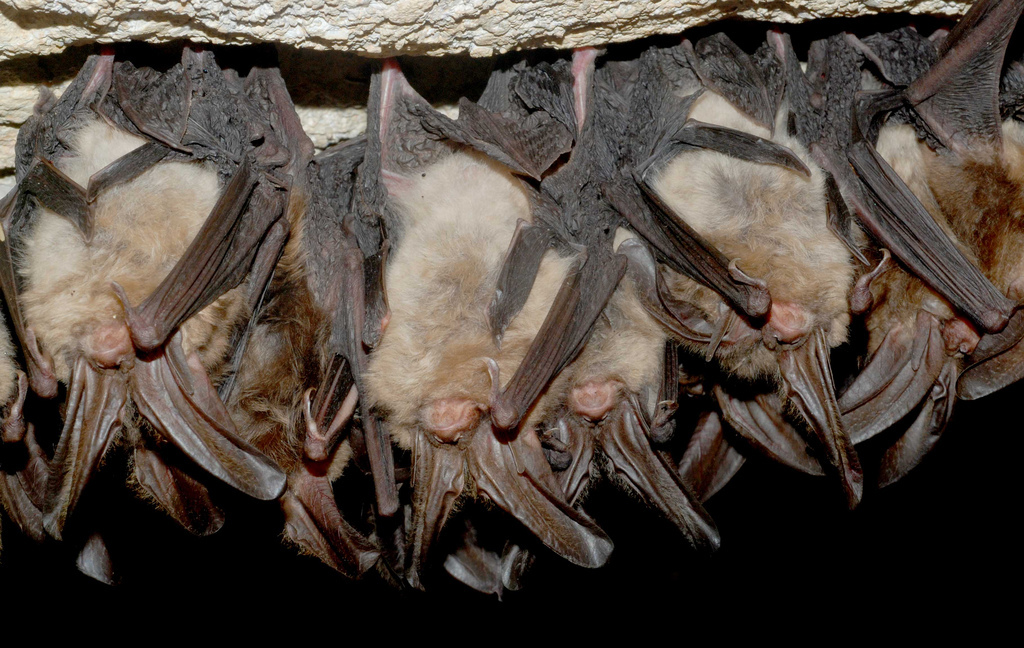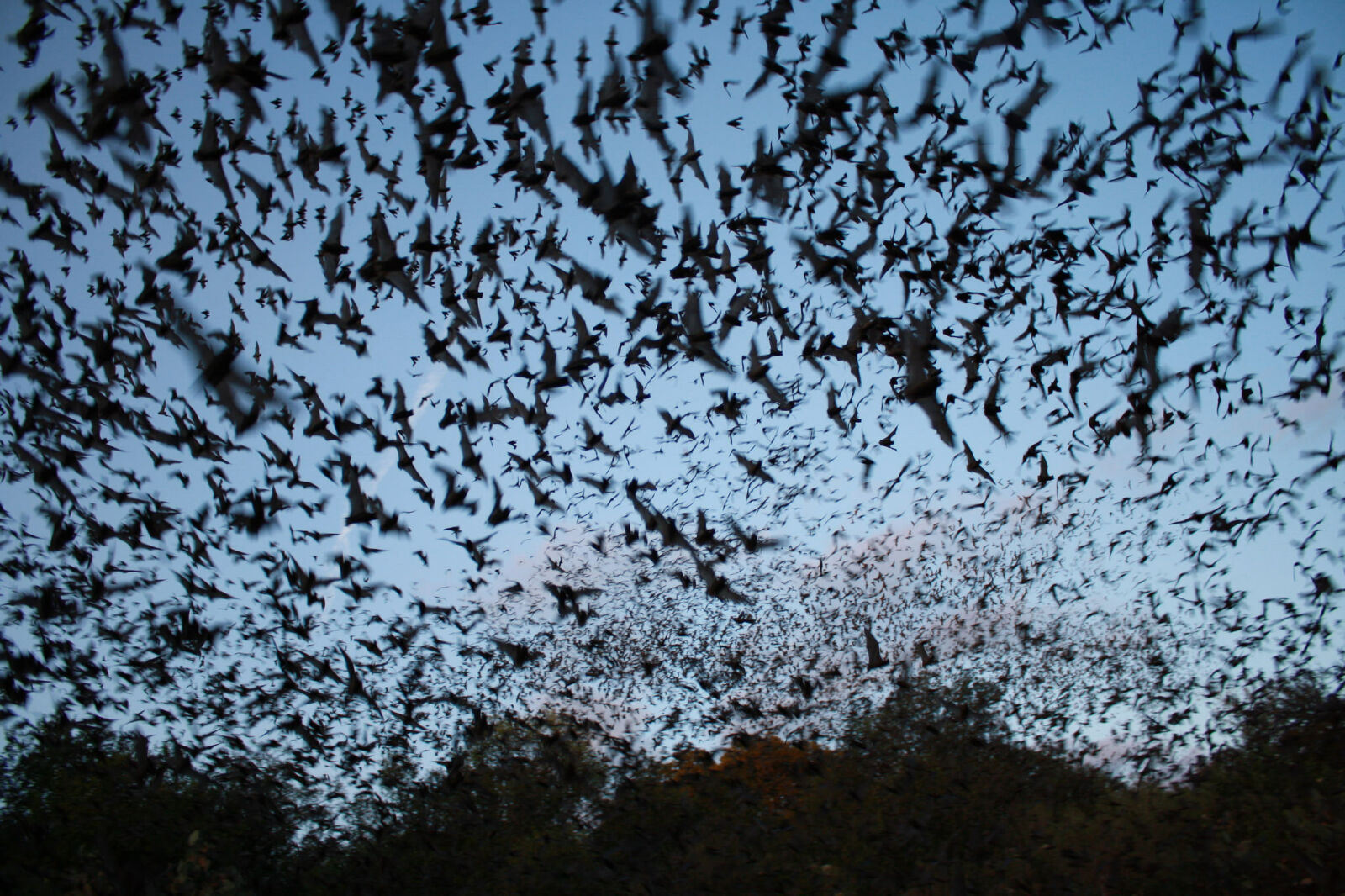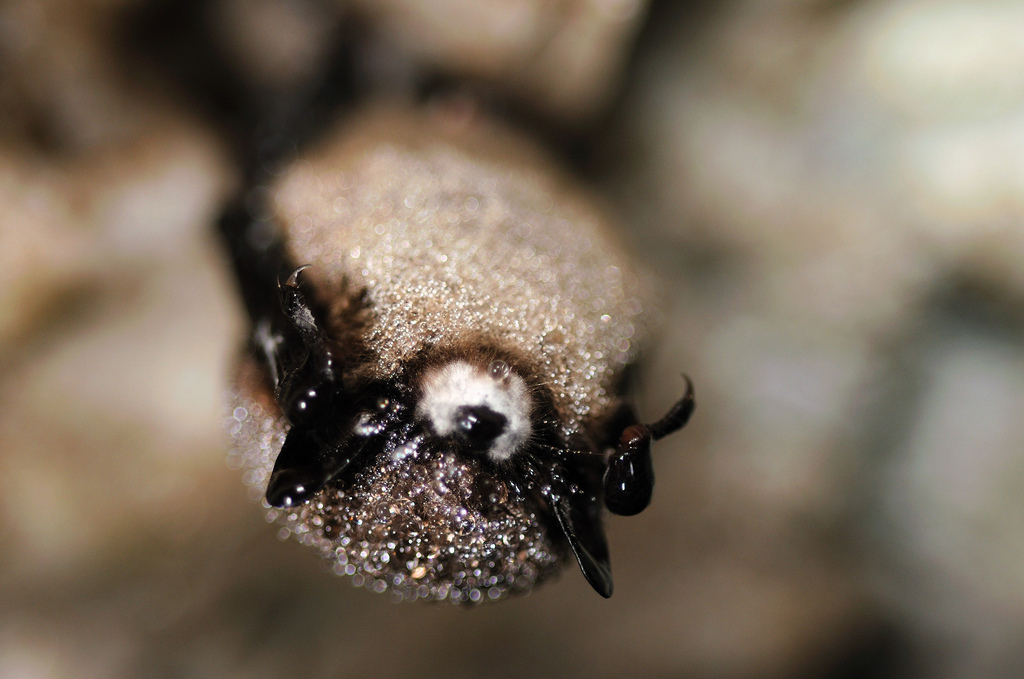How much do you know about the only flying mammal in the world? These fuzzy creatures may be portrayed as monsters in movies, but they’re pretty important to our forests. Here are a couple questions to help you better understand bats:
What do bats eat?
Because there are many different species, there are also many different bat diets! Some bats eat fruit, seeds and pollen, while others eat insects and other small animals. Many bats in the United States are insectivores. In fact, bats are the leading predator of night flying insects such as moths and mosquitos! Others rely solely on fruit and nectar for their diet. These bats, while flying from plant to plant, are a key pollinator for ecosystems around the country.

USDA
What are baby bats called?
Baby bats are called pups! Another fun nomenclature fact about bats is a group of bats are a colony.
Where do bats live?
Bats can be found throughout the United States. Most bats are nocturnal, meaning that they are active at night and rest during the day. During daylight hours you might find bats in caves, old or unattended buildings, under large structures, and in trees. At nighttime can be found hunting for their next meal.

USFWS
Where do bats go during the winter?
It might surprise you, but like many other mammals, bats hibernate during the winter! Hibernation is a process in which animals spend time in a dormant state to save energy. Hibernation is marked by a reduction in heart, respiratory, and metabolic rate, so that animals can survive months with a limited supply of food. During hibernation, a bat’s heart rate may fall from 300 beats per minute to 10!
Bats that do not hibernate migrate south for the winter. Many US bats will travel to Mexico to roost.
How do bats navigate the night sky?
Unlike popular rumors, bats are not blind. But they do use sound waves, echolocation, to navigate the night sky rather than their eyes. Echolocation is the use of echoes to determine where objects are. To echolocate, bats make sounds from their mouth or nose. When the sound wave hits an object, such as an insect, it bounces off the object, helping the bat navigate space. Cool right? The U.S. Military actually based their first radar navigation systems after studying bat’s echolocation!

USDA
Do bats lay eggs?
Bats do not lay eggs because they are mammals. Like other mammals, bats give birth to their pups and nurse them with milk from their bodies. Bats are considered one of the slowest reproducing animals in the world and female bats often only produce one offspring per year.
Do bats really suck blood like vampires?
Stop watching so many scary movies. Most bat species do not suck blood. There is one species, Desmodus Rotundus, commonly called the Vampire Bat that does feed solely on blood. However, Vampire Bats do not adapt well to cold conditions, limiting their habitat to South and Central America.
HOW DO BATS HELP FORESTS?
More than 500 species of plants rely on bats for pollination! Bats are a major pollinator, making it possible for the plants, fruits, and flowers we love to grow. Insectivore bats also control pests. Those annoying mosquitos? There would be too many to handle without bats around to eat them! Bats also disperse seeds and naturally reforest and replant our forests. All to say, bats are critically important for our environment.

Bat with White Nose Syndrome - USFWS
Are bats doing okay?
Unfortunately, no. More than 18% of North American bat species are at risk of extinction. Bat species that aren’t endangered are still seeing a rapid population decline. This is due to habitat loss and White Nose Syndrome. White Nose Syndrome is a disease caused by fungi that has killed nearly 5 million bats in North America. In addition, human disturbances such as habitat fragmentation and degradation of roosting and feeding sites have also impacted bats. Learn more about bats and get involved.

